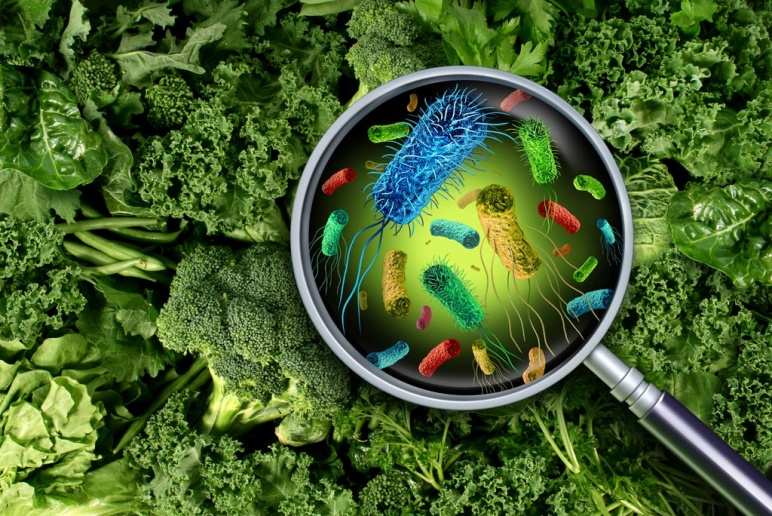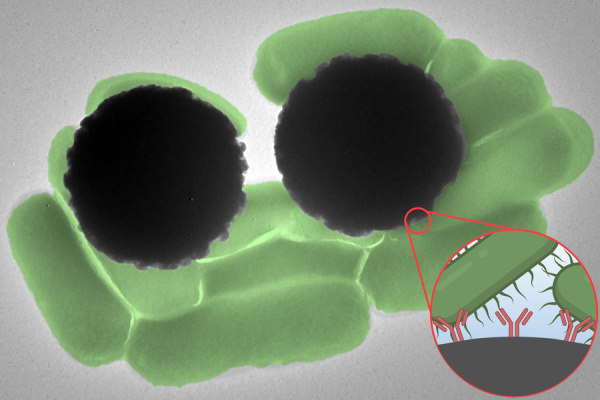Our Research On-site analysis of foodborne pathogens using density-shift immunomagnetic separation and culture

Detecting bacteria in food products before it is sent to consumers could help reduce food recalls and disease outbreaks. Image Credit: Institute of Food Technologists: Brain Food Blog September, 2019
Principal Investigators
Challenge:
Can we rapidly detect foodborne pathogens at food processing sites before contaminated food reaches consumer hands?
Research Strategy
- Develop a novel process to isolate, concentrate, and culture whole bacterial cells in small volumes using affinity ligand-functionalized microbeads
- Develop sample preparation protocols to implement the developed process for detection of foodborne pathogens from different food matrices
- Design, fabricate, and demonstrate an integrated bench-top device for rapid detection of low levels of foodborne pathogens
Project description
Foodborne pathogens are a major source of human morbidity, food recalls, and economic loss. Current detection methods for foodborne pathogens are culture-based and highly sensitive, but involve multiple labor-intensive steps and are available at only a handful of labs in the US. This means that food is often already in consumer hands when contamination is confirmed, leading to disease outbreaks and costly recalls. Rapid tests have emerged to address this challenge, but they typically lack sensitivity and are not necessarily compatible with assays used to identify where and how an outbreak originated. This project aims to develop a scalable, distributable, and sensitive foodborne pathogen analysis platform that returns results in 4-6 hours. The proposed method is based on affinity ligand-based whole-cell capture, concentration, and culture for sensitive pathogen detection in a format that preserves cells for further downstream testing. The goal is to develop a food safety test that is suitable for implementation in an integrated benchtop fluidic device for use by moderately-trained technicians directly at production sites. Using this novel platform, the research team aims to demonstrate detection of Salmonella enteritidis from a variety of food matrices. This research represents a potential advance towards faster on-site foodborne pathogen testing that is complementary with regulatory diagnostic workflows, decreasing the cost of foodborne microbial contamination in terms of both human lives and economic losses.
Outcomes
- Developed and applied a new method to rapidly isolate bacteria from food samples by using microscale beads to bind bacteria, separating out the bacteria-bead aggregates and magnetically concentrating them, enabling direct single-cell visualization of the bacteria in about an hour
- Tested the system on salmonella in spinach
- Developed a method for labelling of target cells without additional steps to identify specific target bacteria using fluorescence, and showed that the method kept the cells alive, enabling the cells to be cultured after isolation
- Created device designs to implement the new method, which with further development, has the potential to enable rapid detection of pathogens in food and other samples in food processing facilities
News
Additional Details
Impact Areas
- Food
Research Themes
- Sensors & Monitoring
- Technology & Commercialization
Year Funded
- 2021
Grant Type
- Seed Grant
Status
- Completed


